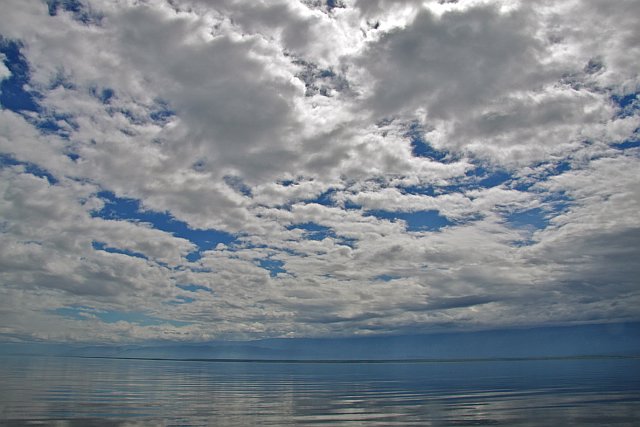- English
- Español
Integrated Water Resources Management
Past Projects
Resources
Sustainable Forest Management in the Transboundary Gran Chaco Americano Ecosystem
The “Gran Chaco Americano” biome covers approximately 1,000,000 km² of South America. It encompasses the central-north region of Argentina (53% of the total area of the Gran Chaco and 22% of the country’s surface area), western Paraguay (25% of the Gran Chaco area and 60% of the country’s area), and the southeast region of Bolivia (14% of the Gran Chaco area and 13% of the country’s area). The total population in the Gran Chaco is approximately 3,985,000 inhabitants, of which 90% live in the Argentinean Chaco, 3% in the Paraguayan Chaco and 7% in the Bolivian Chaco. Population density overall is low, with 70% of the people living in urban areas and the remaining 30% living in rural areas with a density of only one inhabitant per square kilometer. The Gran Chaco represents the largest dry forest ecosystem in South America. Its identified biodiversity includes 3,400 plant species, of which 400 are endemic, 150 mammal species, 12 of which are endemic, almost 500 species of birds, 186 amphibious species, and 297 reptilian species. The Gran Chaco comprises a mosaic of environments from savannahs to wetlands, as well as one of the largest remaining tracts of dry forests in the world and the second largest forested ecosystem outside the Amazon in South America. The Chaco spans the gap between the Brazilian Cerrado savannahs and the Andes Mountains, harboring significant diversity and endemism in its fauna and flora, which define it as a key area for conservation of biodiversity.

Since 1996, several agreements regarding the Gran Chaco have been signed by Argentina, Bolivia and Paraguay, including a declaration between the National Focal Points of the UNCCD and the Global Mechanism establishing the framework for the regional cooperation for the sustainable development of the Gran Chaco. The declaration focused on three main aspects: (i) the improvement of the socioeconomic conditions of the local populations; (ii) the establishment of concrete actions on the ground to mitigate the degradation of the Chaco ecosystems and (iii) the promotion of concrete actions to preserve both the biological diversity as well as the cultural diversity. This declaration was further confirmed and reinforced in March 2007 when the three countries signed the Framework Cooperation Agreement for the Sub-Regional Action Program for the Sustainable Development of the Gran Chaco Americano (SRAP). As a product of this agreement, a Tri-national Council and Commission were established. Its main task is to ensure synergies between the National Focal Points and the regional framework, while simultaneously facilitating the implementation of the SRAP.
Challenges
 The natural resources of the Chaco have been severely degraded by biological and socio-economic processes, which have lead to an accelerated process of desertification and recurrent flooding. The impacts of human activity on this fragile ecosystem, with very sandy and poor soils, scarce and irregular rainfall, strong winds and high temperatures, make the production of the necessary amount of biomass by the native vegetation difficult to attain a substantial recovery and overcome the degradation processes. A set of threats affecting ecosystem stability, along with their functions, causes, and barriers, have been identified throughout the three participating countries. These threats include the following: deforestation of native forests, overdependence on livestock production and forest exploitation, overgrazing, forest and grassland fires, unsustainable management of water resources, loss of biodiversity, and climate change.
The natural resources of the Chaco have been severely degraded by biological and socio-economic processes, which have lead to an accelerated process of desertification and recurrent flooding. The impacts of human activity on this fragile ecosystem, with very sandy and poor soils, scarce and irregular rainfall, strong winds and high temperatures, make the production of the necessary amount of biomass by the native vegetation difficult to attain a substantial recovery and overcome the degradation processes. A set of threats affecting ecosystem stability, along with their functions, causes, and barriers, have been identified throughout the three participating countries. These threats include the following: deforestation of native forests, overdependence on livestock production and forest exploitation, overgrazing, forest and grassland fires, unsustainable management of water resources, loss of biodiversity, and climate change.
The causes of these significant threats to the Gran Chaco are varied. The deforestation of native forests is due to the fact that traditional forestry has an extractive nature and overexploits the forests for timber, wood or charcoal, with few or no practices favoring regeneration of the native forest. Overdependence on livestock production and forest exploitation stems from many sources, including: (i) poor soils and low rainfall of the Chaco; (ii) lack of agricultural diversification of the small and medium sized producers; (iii) unsustainable animal husbandry and forestry practices; and (iv) lack of economic incentives to promote other traditional activities or alternative uses of the forest. Overgrazing is a problem that derives from the disappearance of the most palatable plant species and the appearance of woody unpalatable species, which reduces the quality of the rangelands on which livestock depends, as well as erosion, loss of habitat for native species, and a considerable reduction in cattle stock and productivity. Forest and grassland fires are used to clear the lands for cultivation of crops or pastures, to clear crop residues, and to stimulate renewal and growth of grasses in either native grasslands or cultivated pastures. Due to mismanagement during these operations, the fires reach an uncontrollable status and affect much larger areas. Unsustainable management of water resources can be traced to the use of crop irrigation and water supply to cattle without complying with existing water management regulations and without sufficiently assessing the impacts on the local and downstream environments. Loss of biodiversity is caused by deforestation and replacement of natural environments by agriculture and livestock breeding, irrational and abusive use of pesticides and pollution, overexploitation of certain native species, and lack of awareness by society in general on issues related to conservation and sustainable use of biodiversity. Lastly, climate change and global warming come from losses of forest cover due to the expansion of agricultural and livestock producing areas and road infrastructure, fires and inadequate use of fire, and their associated root causes, and an increase in cattle stocks.
Project Goals
This project seeks to contribute to the reversal of land degradation trends in the Gran Chaco through supporting sustainable land management in the productive landscape. The project will complement the efforts of Argentina, Bolivia and Paraguay, under the Sub-Regional Action Program for Sustainable Development of the Gran Chaco (SRAP) by: (i) mainstreaming Sustained Forest Management (SFM) and Sustained Land Management (SLM) principles into policy and legal frameworks; (ii) providing capacity building at regional, provincial/departmental and local levels; (iii) developing tools and instruments to mainstream SFM and SLM concerns into regional land use planning and decision making processes; and (iv) designing and implementing on-the-ground investments and increased stakeholder participation to implement sustainable management practices, in order to reduce land degradation and combat desertification that contributes to poverty alleviation.
The overall environmental project benefits will be reduced rates of deforestation, increased regeneration of native vegetation and strengthening of conservation areas and biological corridors and contributing to recovery of ecosystem functions and services, namely soil fertility, availability of water resources, CO2 balance, habitats and plant and animal species, ecosystem carrying capacities and consequently recovery of ecosystem resilience. Most importantly for the inhabitants of the Gran Chaco, achievement of environmental benefits will contribute to reduce poverty and improved livelihoods.


